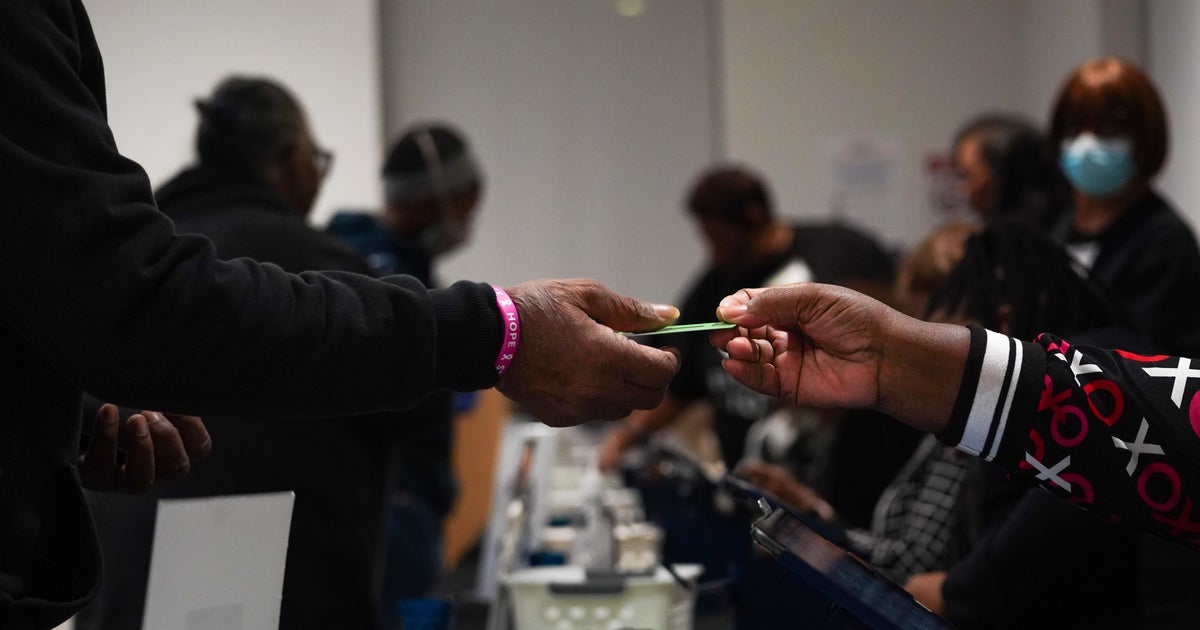Star Tribune
Snow dusts the Twin Cities, could gum up morning commute

The Twin Cities is off to a slow start when it comes to December winter weather, but a light dusting of snow fell across the region Monday night and could last through the next day or so.
The majority of the expected snow had already fallen by 9:30 p.m. and there was “diminishing chances” of snow lasting until around 1 or 2 a.m. Tuesday, National Weather Service meteorologist Tyler Hasenstein said.
Road conditions could get somewhat worse in the early morning when temperatures drop and could freeze wet roads, he cautioned.
The NWS issued a “hazardous weather outlook” for Monday night into early Tuesday morning, with minor accumulations and impacts expected.
Road cameras were showing that snow was accumulating somewhat on the sides of the roads but it hadn’t caused much of an issue for driving conditions Monday night, he added.
“Most of that’s probably going to be gone tomorrow, and if not tomorrow by Wednesday, Thursday, when the temperatures warm more,” Hasenstein said.
Thursday could warm up to highs in the low 50s in the Twin Cities, forecasts show.
Forecasts show little to no snow for the upcoming week, but there’s a small chance of some flurries Saturday night. Hasenstein noted it’s to be expected that Minnesota would have a slow start to winter given that it’s an El Niño year, when temperatures trend warmer.
“This kind of is the textbook pattern for that and it’s behaving as expected so far,” Hasenstein said.
Star Tribune
Derrick Thompson rejects plea deal, will stand trial for murder in Mpls. crash that killed 5 women

On the night of the crash, Derrick Thompson was observed by a Minnesota state trooper driving 95 mph on Interstate 35W in a Cadillac Escalade. Thompson exited onto Lake Street, never decelerated, blew a red light and crashed into a Honda Civic carrying the five women.
The state trooper pursuing the car never turned on his lights but immediately approached the Civic, which had been hit with such force it was pushed out of the intersection and pinned against a retaining wall for the 35W bridge. All five passengers in the car were dead.
The victims were Sabiriin Ali, 17, of Bloomington; Sahra Gesaade, 20, of Brooklyn Center; Salma Abdikadir, 20, of St. Louis Park; Sagal Hersi, 19, of Minneapolis, and Siham Adam, 19, of Minneapolis.
On the night they were killed, the women were on their way home after running last-minute errands before a friend’s wedding the next day. Their funeral last year was attended by thousands at a football field behind the Dar Al-Farooq Islamic Center in Bloomington, where all five had all volunteered and taught. An online fundraiser to support the victims’ families raised over $450,000.
After the crash, Thompson allegedly fled on foot to a nearby Taco Bell, where an eyewitness identified him “100 percent positive” as the driver of the Escalade. Investigators used a receipt and surveillance video to show that Thompson had rented the car from a Hertz location at Minneapolis-St. Paul International Airport about 24 minutes before the crash.
When officers obtained a search warrant for the Escalade, they found a Glock 40 semiautomatic handgun, 250 grams of fentanyl in 2,000 individual pills, 35.6 grams of cocaine and 13 pills that tested positive for MDMA.
Star Tribune
After weeks and weeks of blocking and tackling, Monticello football standout Eli Pietig is celebrating

“Playing middle linebacker is second nature for me. I’ve been playing that position all my life. I love tackling people,” Pietig said. “We have been playing good, aggressive football on defense.”
“Kadence’s poise and leadership under pressure are what makes her special and stand out,” Raiders coach Greg Ueland said. That showed in the Class 4A, Section 4 championship when Roseville (26-5) rallied for a 21-25, 24-26, 25-14, 27-25, 15-10 victory over Stillwater. A senior, Davison had 50 set assists, 21 digs, three kills, three ace serves and two blocks in the game. She has 917 assists, 271 digs, 32 kills, 33 ace serves and 36 blocks this season. “Kadence has been a confident and vocal leader for this team since the moment she played varsity as a freshmen,” Ueland said. “She is a consistent setter who sees the court so well and knows who to get the ball to, setting our team up for success.”
The Prep Athletes of the Week, clockwise from top left; Eli Pietig of Monticello, Kadence Davison of Roseville, Erik Semling of Winona Cotter/Hope Lutheran, Tenley Senden of Wayzata, Blaine Smith of Stephen-Argyle, Audrey Brownell of Staples-Motley and Zayan Oliyath of
Eagan.
The future looks bright for Semling, a freshman. Semling won the Class 1A cross-country state championship with a school-record time of 15 minutes, 23.5 seconds over the 5K course at the Les Bolstad Golf Course in Falcon Heights. He entered the meet ranked second in the state by the coaches association. “His race was truly impressive,” Winona Cotter/Hope Lutheran coach Mike Costello said. “In two other big meets this year, he was dealing with an illness and minor injury. But he was 100 percent and really uncorked one. An amazing time and feat for anyone but extraordinary for a freshman.”
No moment is too big for Senden. The senior forward scored back-to-back goals, leading the No. 2-ranked Trojans (19-1-1) to a 3-1 victory over Lake Conference rival Edina, ranked fifth, for the Class 3A state championship. She scored at least one goal in each game of Wayzata’s season-ending 13-game winning streak. A Gophers recruit, she finished the season with 26 goals and 17 assists. “Tenley is an electrifying player with super speed who scored key goals in every state tournament game game,” Wayzata coach Tony Peszneker said.
The senior running back/linebacker is dominant on both sides of the ball. The 5-11, 192-pound Smith rushed for 268 yards on 25 carries and scored four touchdowns, leading the Storm (10-1) to a 42-14 victory over Warren-Alvarado-Oslo for the Nine-Player, Section 8 championship at the Fargodome. He scored on runs of 11, 28, 52 and 71 yards. Smith was active on defense as well, making 12 tackles. “Blaine has been consistently productive on both sides of the ball,” Storm coach Ethan Marquis said. “He is a strong player who has carried the ball well as of late for us.”
Brownell lived up to her ranking as the No. 1-rated runner in Class 1A. She won the cross-country state championship with a time of 18:17.2. Three weeks ago, Brownell established the school record with a time of 17:50.1 at the Heart O’Lakes Conference meet at Arvig Park in Perham. “She spent the season achieving goals and then setting new ones,” Cardinals coach Bruce Fuhrman said. A junior, Brownell won six of her seven races this season. “She understands the importance of logging of miles, speed workouts, tempo running, rest and other technical aspects required to become a great runner,” Fuhrman said.
Star Tribune
Man suspected in a fatal shooting in New Hope is arrested Wisconsin
A man suspected in a fatal shooting last month in New Hope has been captured in western Wisconsin, officials said Monday.
Jack Guy 32, no known address, was arrested without resistance early Saturday afternoon near Balsam Lake and remains in the Polk County jail on charges of second-degree murder and illegal weapons possession, according to the Polk County Sheriff’s Office.
He remains held in Wisconsin pending his extradition back to Minnesota.
New Hope police said Guy shot 23-year-old Carnell Mark Johnson Jr., of Bloomington, on Oct. 24 in a home in the 7300 block of Bass Lake Road. Johnson was shot in the chest, the Hennepin County Medical Examiner’s Office said.
Court records in Minnesota show that Guy has been convicted of many crimes over the years, including five times for violating a no-contact order and once each for a weapons offense, domestic assault, forgery, illicit drugs, theft, burglary and disorderly conduct.
According to the charges, which were filed Wednesday but remained under a court-order seal until Guy’s arrest:
In response to a 911 call from the home, officers arrived at the scene, where the caller said her brother had been shot. She later described him to police as not blood-related but a family friend.
She directed the officers to the living room, where Johnson was on the floor. Emergency medical responders took him to North Memorial Health Hospital, where he was declared dead that night.



